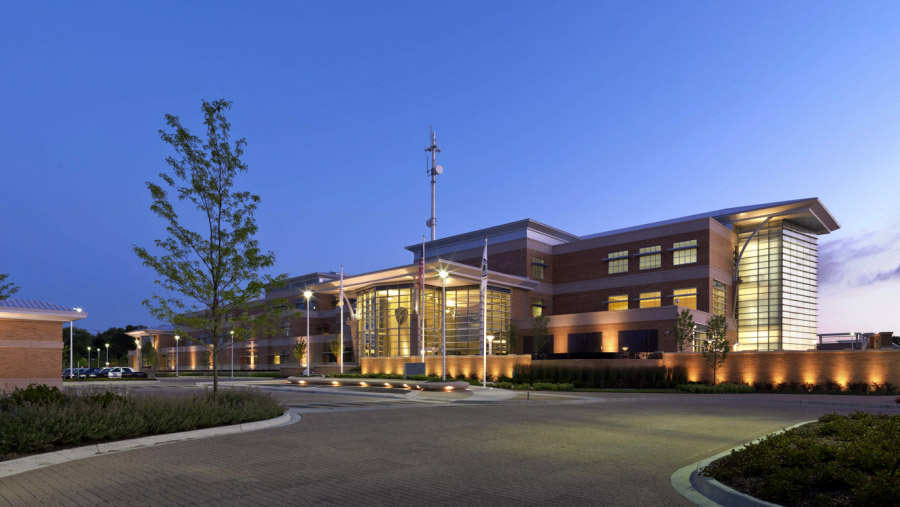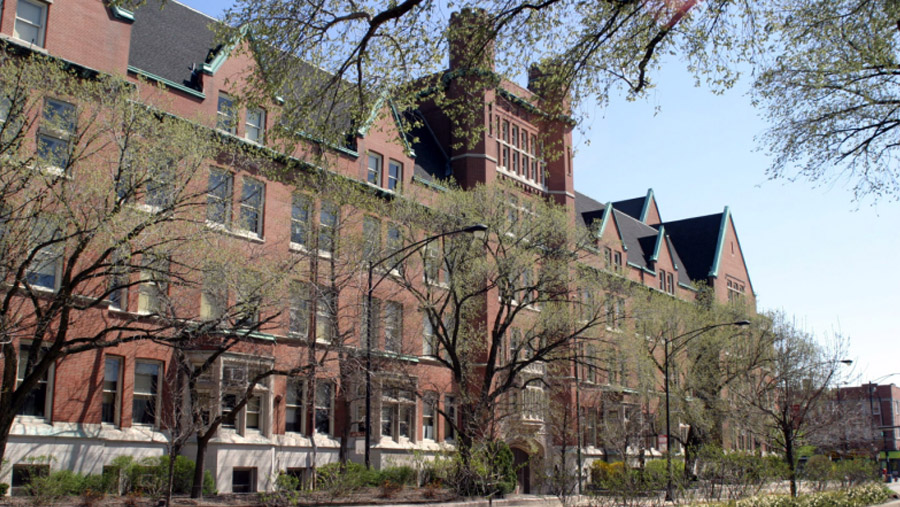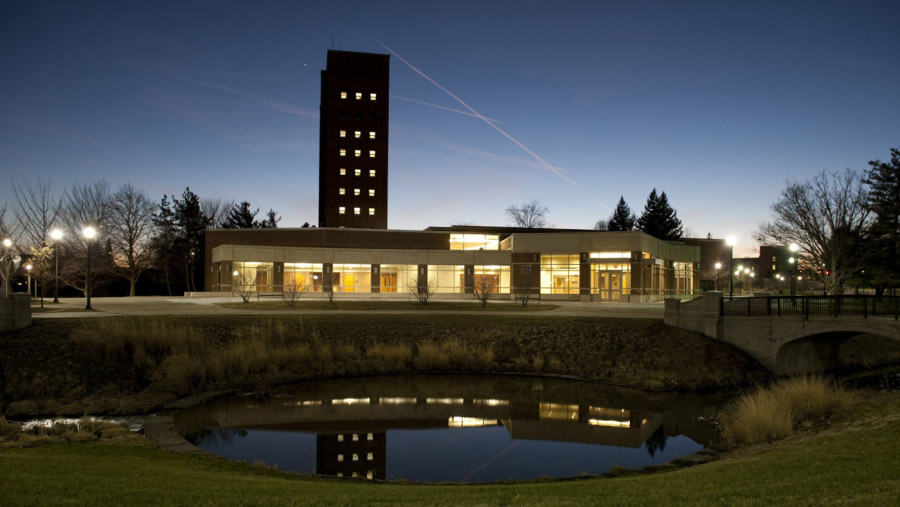Guns and Schools: Hard or Soft?
5/11/2019

In the wake of the Parkland shootings, the NRA has called for immediate hardening of schools, while NPR responded by saying they should be softened, and architects are caught in the crosshairs of the argument. Especially architects who are involved with school design must now choose how, or whether, to address guns in schools. Guns and schools don't mix. But it is currently doubtful that the strong gun control laws needed to help curb this problem will soon be enacted. Architects, as the professional group tasked with designing education environments to meet standards of health, safety, and welfare, must now make sense of conflicting demands and viewpoints. They must also navigate between the new legions of security experts and products arising from these national tragedies, with their often absurd solutions for making schools safe from gun-wielding maniacs, and the concerned parents who are at a loss what to do. Even if sensible gun laws were enacted immediately, their salutary effects would take time, since there are so many guns now in circulation. It is an issue architects must come to grips with.
The Parkland shootings have brought gun control back into the forum of debate. Following the 2012 massacre at Sandy Hook Elementary School, the NRA produced a lengthy document calling for hardening schools. In addition to arming teachers themselves, the panel recommended changes to the architectural landscape to expose school perimeters; physically hardening the school structure; and limiting access points. NRA head Wayne LaPierre recently declared to the Conservative Political Action Conference,"In every community in America, school districts, PTAs, teachers unions, local law enforcement, moms and dads, they must all come together to implement the very best strategy to harden their schools, including effective, trained, armed security that will absolutely protect every innocent child in this country. And that has to happen now. LaPierre, in looking at architecture, is anxious to gin up immediate focus on anything peripheral to the core problem, which is the guns themselves."
In response NPR and others have campaigned for softening schools. Largely opposed to introducing more guns into schools, especially in the hands of teachers, NPR and other anti-gun groups have come up with a prescriptive eight-point Call for Action to Prevent Gun Violence in the United States of America. Their call for action encompasses three levels of prevention: one, universal approaches promoting safety and well-being for everyone; two, practices for reducing risk and promoting protective factors for persons experiencing difficulties: and three, interventions for individuals where violence is present or appears imminent.
Supporters of hardening schools suggest updating and increasing the physical security of schools by adding metal detectors, cameras, barricades, and even social media monitoring. But is this the answer? UCLA professor Pedro Noguera, director of the Center for the Transformation of Schools, says there is danger in hardening schools, "If you think about it, the purpose of school is to create an environment where kids can learn, where they are able to develop and explore and, hopefully, to grow, and you don't do that in an unsafe atmosphere, for sure. But you also don't do it in an atmosphere where there's a hyper sense of security. Security tends to make us feel more stressed and less able to relax when there are people around with guns who are patrolling. So, I think it's something we need to be very careful about. The real work we need to do has to take place in our society to make our society safer than it is right now."
Architects, answering to concerned parents and school boards, now have the difficult job of navigating between these positions. Investing millions, or many billions of dollars to harden the nation's 100,000-plus schools is a lot of money to prevent something that happens only very rarely, even though every time it happens is tragic. But to a parent whose child's life has an incalculable value, any cost-benefit analysis would seem heartless and irrelevant.

Lakeview High School, Chicago: The oldest operating public secondary school in Illinois (Cordogan Clark & Associates, renovation architects)
For more than a century making schools safe has primarily meant designing schools and helping craft codes for fire safety: easy quick egress, outswinging doors (that, contrary to many NRA-affiliated posts that show inswinging classroom doors, are not easy to barricade); then from the late 70s on this has included accessibility and sustainable design: Much of this works against turning schools into a protected bunker from a mass shooter; in the case of sustainable design, with its emphasis on lean construction and natural light, I think most of it does.
Architects now must choose what to design for, or against: Do you swing the door out and make it easy to open in the event of fire, or swing it in and equip it with heavy locks so you can better barricade it? Most codes don't yet address mass shootings. Many commonly used wall types are pervious to automatic rifle bullets: some common wall types may even require multiple walls to slow or stop bullets. And we don't yet have ballistics testing for most of the walls we use. The cost of designing new schools and retrofitting old ones as bunkers could easily cost many hundreds of billions of dollars, with ballistic steel to line drywall partitions; sand filled cavities; bullet resistive glass, etc. Even then, outdoor spaces are vulnerable and would need protection. We almost don't know where to start. Meanwhile funding for schools has been getting cut; while the new tax code favors private over public schools; which means in the future even less funding will be available. Following the Parkland, Florida shootings, the question at the front of everyone's minds is what can be done to make schools safer? One option is to reinforce the physical security of schools to deter mass shooters. Securing schools has already become a multi-billion-dollar industry. Will these tactics be effective?

In the aftermath of the horrific shootings in this building near the center of its campus, the University used a major addition and renovation to reposition it (Cordogan Clark & Associates Architects)
With every shooting that has taken place, experts in the field have been compiling information and research to figure out preventative measures. In 2014, the Justice Department launched the Comprehensive School Safety Initiative with a $75 million congressional appropriation. Two years later, the RAND Corporation conducted a study backed by the US Department of Justice that examined preventative measures that schools have taken to increase safety. "We were really surprised about how little evidence of efficacy there was", said Heather Schwartz, a policy researcher who headed up the study for the think tank. "We were eager to find someone with evidence of effectiveness, and we just did not find that". Her report concluded,The field is in desperate need of more evidence on what works. Currently, many schools rely on two security reports one from the Homeland Security, the other from the National Institute of Building Sciences. First on the list is to create secure entries with locks or screened admittance. Second on the list are security cameras and metal detectors: these, however, often have limited effectiveness. Studies find that traditional methods to harden school buildings, such as metal detectors and cameras, are often not effective. In part this is because they are frequently not used after they are installed, in part because they create delays for students. Most likely a metal detector will not stop a shooter.
Eric Madfis, associate professor and degree chair of criminal justice at the University of Washington Tacoma, stated, "Once you have a motivated offender who's willing to shoot up a school and maybe kill themselves or lose their own life, it's extremely difficult to defend against that". Security elements at the new Sandy Hook Elementary School in Newton, Connecticuit, entail one main, closely monitored entrance along with bullet-resistant glass and other materials on a select number of windows. Architect Bob Mitchell, chairman of Newtown's Public Building & Site Commission was hesitant to go into the specific details due to safety concerns in a recent Boston Globe article. (This hesitancy points up an important aspect of physically hardening schools where budgets are limited: Uncertainty as to what's hard or soft can itself be a discouraging factor.) "The end product is this is a school, not a fortress", Mitchell explains. However, compartmentalizing an intruder in a secure area does seem to be a promising approach that needs focus.
In short, it does not seem to be a matter of hard or soft, but rather hard and soft. Identifying and addressing internal behavioral issues that increase school dangers, like bullying, fighting, and mental health issues reduces threats to students. But these are operational issues that we as architects don't control. So is whether teachers are armed. To a large extent though we do control the physical design of the educational environment. That there is limited data on the effectiveness of school safety design measures is not yet evidence that these measures are ineffective. Obviously, many can be easily circumvented, while some can't: more data and study are needed. Meanwhile, as architects continue to design and renovate more schools, we are creating the test cases and best practices that will provide future data. It's horrific to contemplate the slaughter of any innocent person, but especially students and schoolchildren. And it's an overreaction to say that implementing security design measures means turning schools into bunkers. Unless and until this problem is legislated out of existence through common sense gun laws, we as architects must do our best to address physical design measures that make sense, while still creating supportive educational environments that promote academic success.